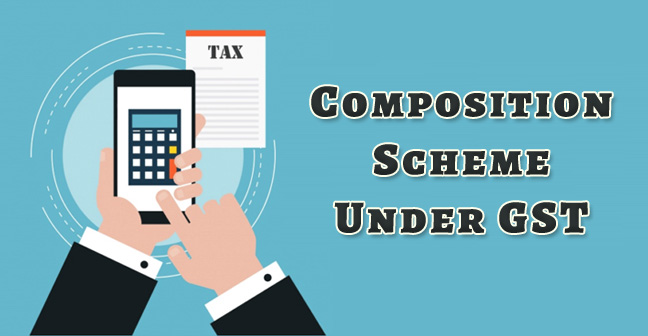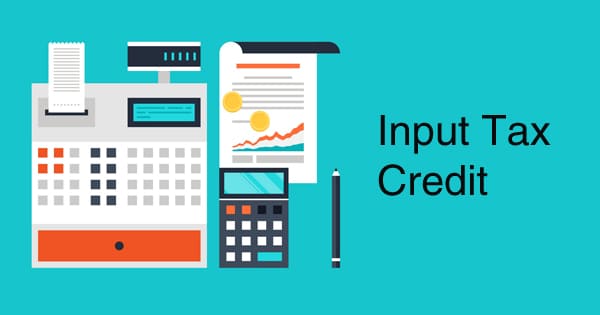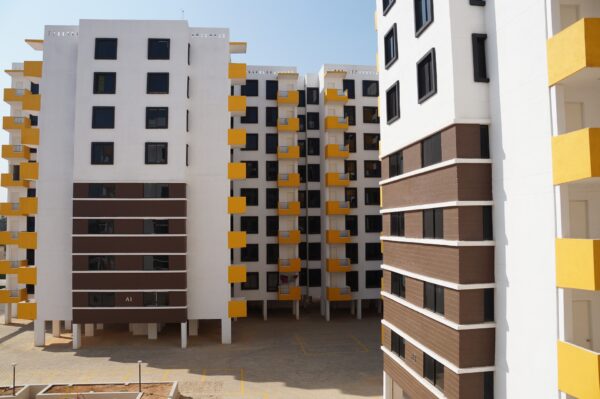The Composition scheme is a very simple, hassle free compliance scheme for small taxpayers. It is a voluntary and optional scheme. Its benefits include easy compliance as no elaborate accounts and records to be maintained, Simple Quarterly Return and Quarterly payment of tax.
Provisions related to composition levy have been provided under section 10 of the Central GST Act, 2017 and Chapter 2 of the CGST Rules, 2017.
In regard to Composition Scheme a very common question that is faced by the supplier of goods is that whether they would be eligible for Composition Scheme, if they are also supplying some services.
It is also important to note here that there are two types of composition schemes, first being the normal composition scheme for supplier of goods or restaurant service providers, under Section 10(1) / (2) and other being for service suppliers under Section 10(2A) of the CGST Act, 2017.
In this article we will try to resolve the issue of supply of services by supplier of goods and its impact on his eligibility to opt for composition scheme.
Composition Scheme under Section 10(1) / (2):
Sub-section (1) of Section 10 of the CGST Act, 2017 provides details regarding opting for composition levy. Further sub-section (2) provides the eligibility criterion in regard to composition levy.
A taxpayer can opt for the composition scheme in case his aggregate turnover in the preceding financial year does not exceed Rs 1.5 crore. In case the taxpayer is located in North-Eastern states and Himachal Pradesh, the limit of turnover Rs 75 lakh.
Clause (a) of sub-section (2) of Section 10 mandates that save as provided in sub-section (1), the registered person shall be eligible to opt for composition scheme under Section 10(1) if he is not engaged in the supply of services.
From above provision, it appears that a supplier of goods which is engaged in supply of services may not be eligible to avail composition levy. However it is important to note that clause(a) as stated supra also contains the words” save as provided under sub-section (1)” which means that in case supplier of goods is engaged in supply of services as stated in sub-section (1), they would still be eligible to avail composition scheme.
Supply of services upto 10% of turnover or Rs 5 lakhs whichever is higher can be made:
Second proviso to Section 10(1) of the CGST Act, 2017 reads as under:
Provided further that a person who opts to pay tax under clause (a) or clause (b) or clause (c) may supply services (other than those referred to in clause (b) of paragraph 6 of Schedule II), of value not exceeding ten per cent of turnover in a State or Union territory in the preceding financial year or five lakh rupees, whichever is higher.
From above proviso , it emerges as under:
- Supplier of goods under composition levy can supply services other than those referred to in clause (b) of paragraph 6 of Schedule II i.e. supply of restaurant services. It may be noted here that supply of restaurant services has been excluded here as such suppliers are eligible to avail composition levy.
- Although supply of services has been permitted for supplier of goods, but a restriction thereon has been laid. The restriction is that quantum of supply of services cannot exceed 10% of turnover in State / UT or Rs 5 lakhs whichever is higher.
Meaning of ‘turnover in State’:
As the quantum of services that can be supplied by goods supplier cannot exceed 10% of the turnover in State / UT, it is important to understand what is meant by turnover in State / UT.
The term turnover in State is defined under Section 2(112) of the CGST Act, 2017 as under:
“turnover in State” or “turnover in Union territory” means the aggregate value of all taxable supplies (excluding the value of inward supplies on which tax is payable by a person on reverse charge basis) and exempt supplies made within a State or Union territory by a taxable person, exports of goods or services or both and inter-State supplies of goods or services or both made from the State or Union territory by the said taxable person but excludes central tax, State tax, Union territory tax, integrated tax and cess.
If we see the above definition, it includes all taxable as well as exempt supplies including exports and is in line with the definition of “aggregate turnover’ the only difference between turnover in State / UT is to be determined for supplies from a particular State / UT whereas the ‘aggregate turnover’ is to be computed on all India basis.
Adjustment required to be made, while computing turnover in State:
It is important to note here that after computing ‘turnover in State’ as per above definition, we need to carry out an adjustment in the same, as mandated in Explanation to Section 10(1) of the CGST Act, 2017 which reads as under:
Explanation.—For the purposes of second proviso, the value of exempt supply of services provided by way of extending deposits, loans or advances in so far as the consideration is represented by way of interest or discount shall not be taken into account for determining the value of turnover in a State or Union territory.
In view of above while computing turnover in State for determining the 10% limit of supply of services, the interest or discount income on deposits , loans and advances will be excluded.
Lets understand above with help of an example:
The turnover details of Mr X for the previous financial year is as under:
| Description | Amount (in Rs) |
| Taxable Supplies of goods | 85,00,000 |
| Exempt Supplies of goods | 25,00,000 |
| Export of goods | 10,00,000 |
| Interest income on FDR | 8,00,000 |
| Consultancy Income | 4,00,000 |
| Turnover in the State | 1,27,00,000 |
The turnover in the State is Rs 1.27 Cr, however as discussed , we need to exclude the interest income therefrom for computing the turnover, whose 10% will computed for determining the restriction regarding supply of services by supplier of goods.
Thus adjusted turnover in State comes to Rs 1,19,00,000/- i.e. Rs 1,27,00,000 Minus Rs 8,00,000/-).
Accordingly in instant case Mr X can supply services upto 10% of Rs 1,19,00,000/- i.e. Rs 11,90,000/- or Rs 5,00,000/- whichever is higher i.e. Rs 11,90,000/-.
As in instant case he is supplying services of Rs 12,00,000/- (Intt on FDR and Consultancy income) , thus he has breached the limit and will not be eligible to opt for composition scheme under Section 10(1) of the CGST Act,2017.
Composition Scheme under Section 10(2A):
Apart from Composition Scheme under Section 10(1) , another Composition Scheme is available under Section 10(2A) of the CGST Act read with Notification No. 2/2019 – Central Tax (Rate) dated 07.03.2019 for such persons who are not eligible for Section 10(1).
As supplier of goods or restaurant service providers are covered under Section 10(1) /(2) of the CGST Act, 2017, they will not be covered under Section 10(2A), thus we can say that this scheme is majorly for supplier of services (other than restaurant service providers).
As the moot question is whether supplier of goods can supply services, above Section is not of much relevance for us and thus not discussed further.
Rate of composition tax applicable for supply of services by supplier of goods:
As discussed supra, supplier of goods can also be engaged in supply of services subject to a restriction in total value of services provided viz 10% of turnover in State or Rs 5 lakh whichever is higher.
Now question arises about what rate of GST would be applicable on the supply of services i.e. concessional rate or normal rate. In this regard the rate of tax applicable to composition suppliers is mandated under Rule 7 of the CGST Rules, 2017, relevant extract of which is given below:
| Sl. No. | Section under which composition levy is opted | Category of registered persons | Rate of tax |
| 1. | Sub-sections (1) and (2) of section 10 | Manufacturers, other than manufacturers of such goods as may be notified by the Government | 0.5% of the turnover in the State or Union territory |
| 2. | Sub-sections (1) and (2) of section 10 | Any other supplier (other than manufacturers and restaurant service providers) eligible for composition levy under sub-sections (1) and (2) of section 10 | 0.50% of the turnover of taxable supplies of goods and services in the State or Union territory. |
GST rate on supply of service by manufacturers:
As the manufacturer of goods need to pay GST @ 1% on turnover in the State (0.50% CGST + 0.50% for SGST) , the supply of services made by him will also be subject to this rate of 1% only and normal rate will not be applicable on supply of services made by him.
As turnover in State includes exempt supplies, GST @ 1% will also be payable on exempt supply of services.
However it it is important to note here that it has been mandated in Explanation 2 to Section 10 of the CGST Act, 2017 as under:-
For the purposes of determining the tax payable by a person under this section, the expression “turnover in State or turnover in Union territory” shall not include the value of following supplies,
namely:—
(i) ………………………………..
(ii) exempt supply of services provided by way of extending deposits, loans or advances in so far as the consideration is represented by way of interest or discount.
Thus the manufacturers also engaged in supply of services (to extent permitted) will be required to pay GST @ 1% of its turnover in State including exempt supply of services except interest on bank deposits / loans and advances.
GST rate on supply of services by other supplier of goods:
In regard to other suppliers of goods (other than manufacturers) as per Rule 7 of the CGST Rules, 2017, they need to pay GST @ 1% on turnover of taxable supplies of goods and services (0.50% CGST + 0.50% for SGST).
Accordingly the taxable supply of services made by them will also be subject to this rate of 1% only and normal rate will not be applicable on supply of services made by him.
As tax is payable only on taxable supplies here, no GST is required to be deposited on entire exempt supplies of services unlike manufacturers wherein only exempt supply of interest on deposit , loan or advance was excluded.
***
[rainbow]Don’t miss the next GST Update / Article / Judicial pronouncement[/rainbow]
Subscribe to our newsletter from FREE to stay updated on GST Law
Resolve your GST queries from national level experts on GST free of cost.
Frah Saeed is a law graduate specializing in the core field of indirect taxes and is the Co-founder of taxwallah.com. She has authored many publications on GST and is into full-time consultancy on GST to big corporates. She as a part of taxwallah.com heads a team comprising of Chartered Accountants and Advocates and plays a key role in our mission to disseminate GST knowledge to all.



